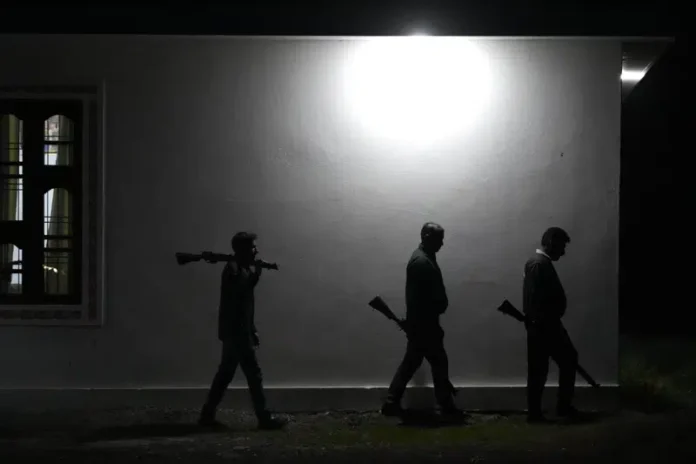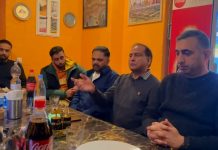DANGURI, India (AP) – After two consecutive attacks in early January in the disputed Kashmir village of Danguri killed seven Hindus, former Indian soldier Satish Kumar said: He described his sleepy mountain village as “a dwelling place of horrors.”
Hundreds of residents have staged angry protests in the Hindu-dominated Jammu region, days after deadly violence in the border village of Rajuli, where houses are separated by corn and mustard fields. In response, Indian authorities revived the government-backed militia and began arming and training thousands of villagers, including some teenagers.
Kumar was one of the first to join the militia under the new movement, and authorities armed him with a semi-automatic rifle and his 100 rounds of bullets.
“I feel like a soldier again,” said Kumar, 40, who runs a grocery store since retiring from the Indian Army in 2018.
Officially called the Village Defense Corps, the militia was formed in the 1990s as a front line of defense against anti-Indian militants in remote Himalayan villages not readily reachable by government forces. The militias were largely disbanded as armed groups relaxed in their areas of operation and some militia members became known for their atrocities and abuses and were harshly criticized by human rights groups.
However, the January riots have followed previous attacks in Rajuri, near the highly militarized line of control that divides Kashmir between India and Pakistan, where fighting between Indian soldiers and rebels is not uncommon. It brought back unpleasant memories.
The people of the region have largely remained silent and civil freedom was restricted.
When violence erupted in Danguri, the Indian government quickly ramped up the civilian militia despite announcing a reorganization last August.
For the first time, the militia also received financial incentives from the government, which announced that each member would receive INR 4,000 (US$48) a month. Still, the decision to revive the village defense force is not without controversy.
Some security and political experts argue that politics could weaponize divisions in Jammu’s unstable hinterland, where communal strife has historically erupted.
More than 200 police cases have been registered in the past against some of the tens of thousands of militia members in the Jammu region, including rape, murder and sedition charges, according to the government.
“The proliferation of small arms is dangerous for any society, and when a state does this, it is a tacit admission that it has failed to secure a society,” said political analyst Zafar Chowdhury. rice field.
India has a long history of arming civilians in counter-insurgency efforts, and civilian militias were first deployed to fight separatists in India’s northeastern states. In 2005, the Indian federal government created a local militia, the Salwa Judum, to fight Maoist rebels in the central state of Chhattisgarh. She was disbanded in 2011 after being accused of committing widespread atrocities by human rights groups.
In Kashmir, civil defense groups have taken up arms almost six years after a deadly uprising against Indian rule began.
A few months later, the Indian government formally introduced a policy of arming villagers.
Security officials say armed civilians have helped deter militant activity and stem the exodus of Hindus from remote areas, unlike in the Kashmir Valley, a year after armed rebellion broke out.
Wednesday, January 7, 2026
More
© London Post, All Rights Reserved by Independent Media Group UK Limited.






